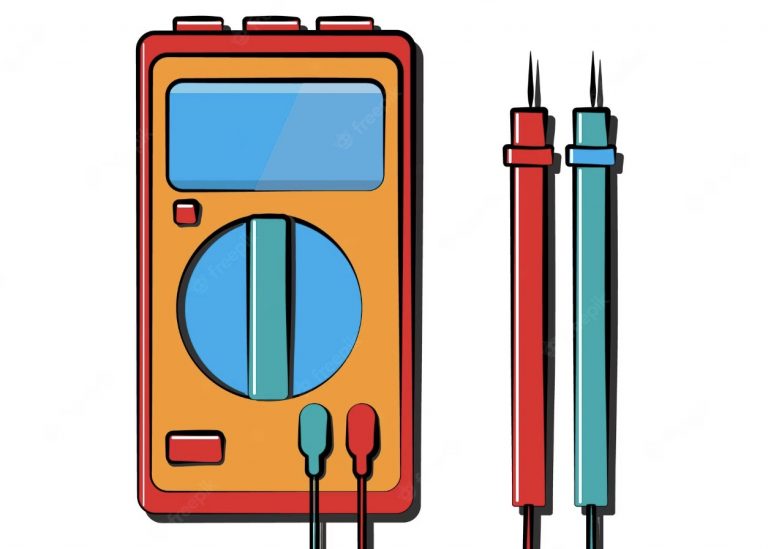If you’re facing the challenge of wiring a 4-prong 220V plug with only 3 wires, it might seem daunting at first. However, with the right guidance, it’s a task that can be accomplished with ease. In this article, we’ll provide a simplified process that you can follow to wire a 4-prong 220V plug with only 3 wires. We’ll also discuss the difference between 3-wire and 4-wire systems, the importance of grounding in electrical wiring, and common mistakes to avoid.
Understanding the 4-Prong 220V Plug and its Wiring
Before we dive into the wiring process, it’s important to understand what a 4-prong 220V plug is and how it works. A 220V plug is a type of electrical connector used for high-voltage appliances, such as dryers and ovens. The plug has four prongs, with two “hot” prongs, a neutral prong, and a ground prong.
In a 4-wire system, the neutral and ground prongs are separate, while in a 3-wire system, they are combined. The neutral wire carries the current back to the source, while the ground wire provides a safe path for excess current to flow in the event of a fault.
The Importance of Grounding in Electrical Wiring
Grounding is a critical aspect of electrical wiring. It provides protection against electrical shock and fire hazards by providing a path for the current to flow back to the source. Without proper grounding, excess current can build up and cause damage to the appliance or even start a fire.
When wiring a 4-prong 220V plug with only 3 wires, it’s essential to ensure that the ground wire is properly connected. This can be achieved by using a jumper wire to connect the neutral and ground prongs on the plug. However, this is not the ideal solution as it can create a potential safety hazard.
The Difference Between 3-Wire and 4-Wire Systems
As mentioned earlier, the main difference between 3-wire and 4-wire systems is the presence of a separate ground wire in the latter. In a 3-wire system, the neutral wire acts as the ground wire, while in a 4-wire system, the ground wire is separate.
The advantage of a 4-wire system is that it provides a dedicated path for excess current to flow, improving safety. However, not all appliances require a 4-wire connection, and in some cases, a 3-wire connection is sufficient.
The Simplified Process of Wiring a 4-Prong 220V Plug with Only 3 Wires
Now that we’ve covered the basics, let’s dive into the simplified process of wiring a 4-prong 220V plug with only 3 wires. Before you begin, make sure to turn off the power to the circuit you’ll be working on.
Preparing the Wires and the Plug
The first step is to prepare the wires and the plug. You’ll need a 4-prong 220V plug, a pair of wire strippers, and a set of wire nuts. Start by using the wire strippers to remove the insulation from the ends of the three wires.
Next, twist the exposed wires together and secure them with a wire nut. This will create a single wire that you’ll use to connect to the plug. Repeat this process for the other two wires.
Connecting the Wires to the Plug
The next step is to connect the wires to the plug. Start by removing the cover from the plug and exposing the prongs. You should see two hot prongs, a neutral prong, and a ground prong.
Take the wire that you created in the previous step and connect it to the neutral and ground prongs. This will create a combined neutral/ground wire that you’ll use to connect to the appliance. Connect the other two wires to the hot prongs.
Testing the Connection for Safety
After you’ve connected the wires to the plug, it’s essential to test the connection for safety. Turn the power back on and use a voltage tester to check the voltage between the hot prongs and the neutral/ground prong.
If everything is working correctly, you should get a reading of 220V. If you don’t get a reading or get a reading that’s lower than 220V, there may be an issue with the connection. In this case, turn off the power and double-check your work.
Common Mistakes to Avoid When Wiring a 4-Prong 220V Plug with 3 Wires
While wiring a 4-prong 220V plug with only 3 wires is a straightforward process, there are some common mistakes to avoid. One of the most significant mistakes is failing to properly ground the plug. As we mentioned earlier, this can create a potential safety hazard and should be avoided.
Another common mistake is failing to properly strip the wires. If the wires are not stripped correctly, they may not make a proper connection with the plug, leading to a loss of power or other issues.
Troubleshooting Tips
If you’re having trouble with your 4-prong 220V plug, there are a few things you can do to troubleshoot the issue. Start by double-checking your wiring and making sure that everything is properly connected. If you’re still having issues, try replacing the plug or contacting a professional electrician for assistance.
Conclusion
Wiring a 4-prong 220V plug with only 3 wires might seem challenging at first, but with the right guidance, it’s a task that can be accomplished with ease. By following the simplified process we’ve outlined in this article, you can ensure that your connection is safe and reliable. Remember to always turn off the power before working on electrical circuits and to double-check your work to avoid common mistakes.


0 Comments